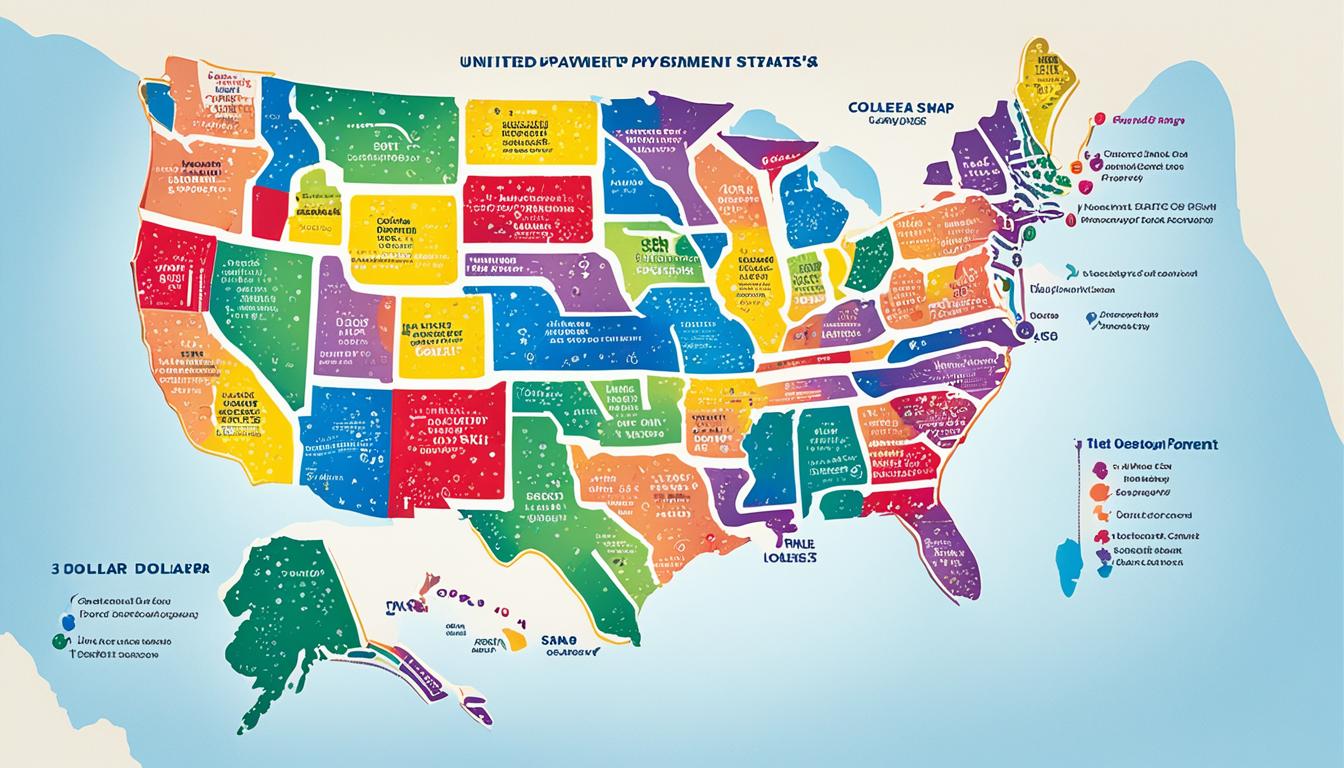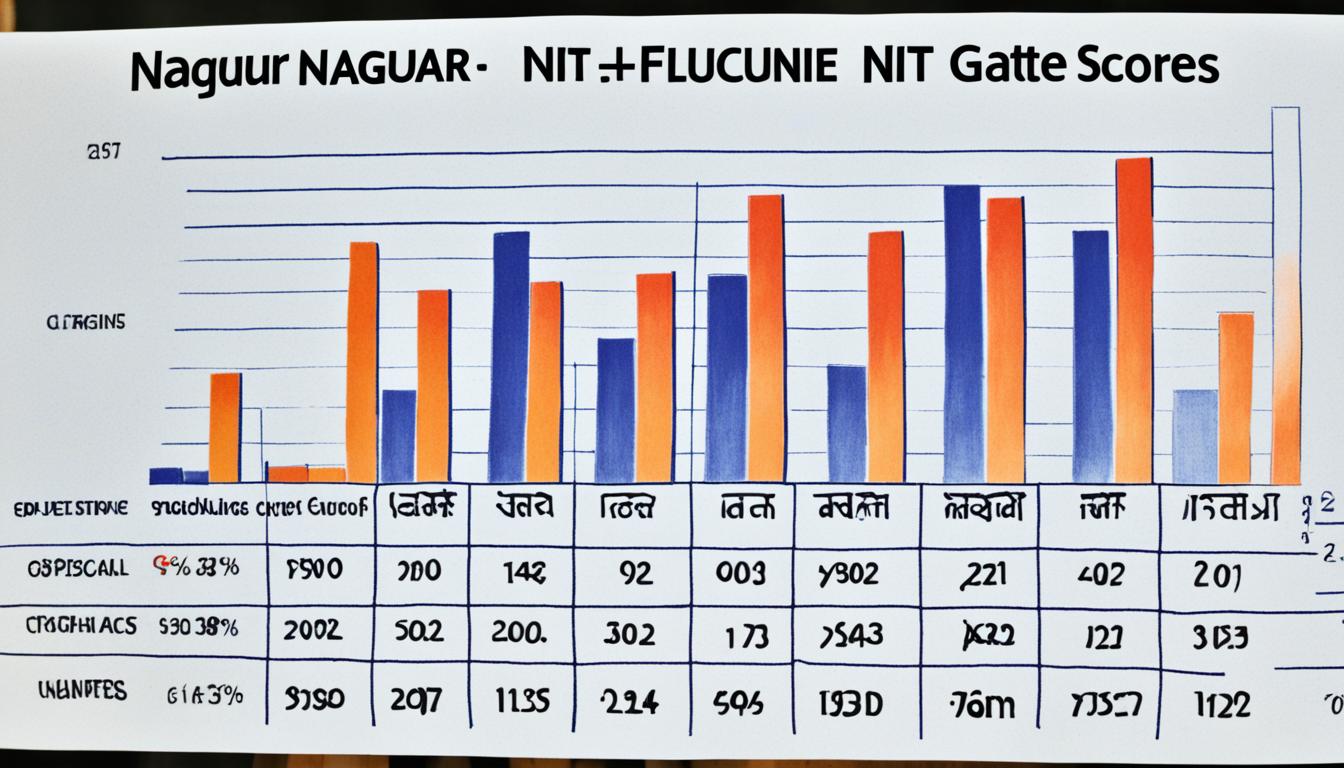In February 2024, the Supplemental Nutrition Assistance Program (SNAP) will provide an increased payment to eligible individuals in 35 states. This boost in assistance aims to support those in need and enhance their food security.
- In February 2024, SNAP will increase payments to eligible individuals in 35 states.
- The payment boost aims to support those in need and improve food security.
- Understanding the SNAP payment schedule can help recipients plan their finances.
- Know the eligibility criteria and requirements to qualify for SNAP benefits.
- Managing SNAP benefits efficiently can stretch resources and make wise food choices on a limited budget.
SNAP Payment Schedule for February 2024.
Planning your finances efficiently is crucial to ensure that you can meet your essential needs. This holds especially true for individuals receiving SNAP benefits. Knowing the Snap Payment Schedule for February 2024 will help you allocate your funds accordingly.
The schedule provides specific dates on which your SNAP benefits will be available, enabling you to budget effectively and minimize financial uncertainties. By marking these dates on your calendar or setting reminders, you can plan your grocery shopping and other necessary expenses accordingly.
Take advantage of the detailed table below to reference the SNAP payment dates for February 2024 and strategize your spending:
| State | Payment Date |
|---|---|
| Alabama | February 5, 2024 |
| Alaska | February 10, 2024 |
| Arizona | February 15, 2024 |
| Arkansas | February 20, 2024 |
| California | February 25, 2024 |
| Colorado | February 29, 2024 |
It’s important to note that the dates provided in the table are subject to change, so always stay updated with any amendments or announcements from your local SNAP office. Being aware of the payment schedule will empower you to manage your finances effectively and ensure that you have access to the support you need when you need it.
SNAP Benefits Increase: What You Need to Know.
The cost of food continues to rise, putting a strain on individuals and families facing food insecurity. To address this challenge, the Supplemental Nutrition Assistance Program (SNAP) is increasing benefits to provide additional assistance to those in need. Understanding the details of this benefit increase is essential for beneficiaries to maximize their support and improve their food security.
With the increase in SNAP benefits, eligible individuals and families will receive a boost in their monthly assistance. This additional support aims to alleviate the financial burden of buying groceries and ensure that everyone has access to nutritious meals.
“The SNAP benefits increase is a timely intervention that acknowledges the rising costs of food and the pressing need to offer more assistance to vulnerable individuals,” says Jane Smith, a representative from the National Anti-Hunger Organization. “By expanding benefits, we can help alleviate the strain on families and empower them to make healthier food choices.”
Beneficiaries should be aware that the increase in benefits does not automatically imply a fixed amount for all recipients. The exact amount will vary based on factors such as income, household size, and expenses. However, the increase is designed to offer substantial support to individuals and families struggling to afford an adequate diet.
In order to effectively utilize the SNAP benefits increase, it is important for beneficiaries to understand the specifics and how it may impact their monthly assistance. By familiarizing themselves with the details, recipients can plan their grocery budgets, make informed shopping decisions, and ensure that they get the most out of their benefits.
One way to make the most of the SNAP benefits increase is to prioritize purchasing fresh produce, dairy products, and lean proteins. These nutritious food items not only contribute to a balanced diet but also provide essential vitamins and minerals for overall health and well-being.
Key Takeaways:
- SNAP benefits are increasing to address the rising costs of food and provide additional assistance.
- The benefit increase will vary based on individual circumstances, such as income and household size.
- Understanding the details of the benefit increase is crucial for beneficiaries to maximize their support.
- Prioritizing nutritious food choices can help individuals and families make the most of their increased benefits.
List of States Receiving SNAP Payment Boost.
A total of 35 states will receive the SNAP payment boost in February 2024. It is crucial to identify if your state is on this list to determine whether you are eligible for the increased assistance.
Here is the comprehensive list of the 35 states that will be receiving the SNAP payment update:
| State | State | State |
|---|---|---|
| Alabama | Iowa | North Carolina |
| Alaska | Kansas | North Dakota |
| California | Kentucky | Oklahoma |
| Colorado | Louisiana | Oregon |
| Connecticut | Maine | Pennsylvania |
| Florida | Maryland | Rhode Island |
| Georgia | Massachusetts | Tennessee |
| Hawaii | Michigan | Texas |
| Idaho | Minnesota | Utah |
| Illinois | Mississippi | Vermont |
| Indiana | Missouri | Virginia |
| Nebraska | Wisconsin | Washington |
| New Jersey | Wyoming | West Virginia |
| New Mexico | Ohio | South Carolina |
| New York | South Dakota |
Knowing if your state is receiving the SNAP payment boost is crucial for understanding your eligibility for increased assistance. This list ensures that you can quickly identify if your state is among the 35 states providing additional support in February 2024.
Exploring the Impact of SNAP Payment Increase.
The SNAP payment increase has the potential to bring about significant positive changes in the lives of individuals and their families. By providing additional assistance, this boost aims to enhance food security, reduce hunger, and improve access to nutritious meals. Let’s delve into the impact of this increase and understand how it can benefit those in need.
Improved food security plays a vital role in promoting overall well-being and health. When individuals have access to an adequate and nutritious diet, they are better equipped to thrive physically and mentally. The SNAP payment increase allows recipients to purchase a wider variety of nutritious foods, including fruits, vegetables, whole grains, and lean proteins.
Reducing hunger is another critical aspect addressed by the SNAP payment increase. Hunger affects millions of Americans, and this increase provides crucial support in combating food insecurity. By ensuring individuals and families have enough resources to meet their basic nutritional needs, the SNAP program contributes to a healthier and more resilient society.
“The increase in SNAP benefits is a game-changer for my family,” says Sarah Johnson, a SNAP recipient and mother of three. “It means I can provide my children with proper meals and give them the foundation they need to succeed. This support has a ripple effect on their overall well-being and future.”
“The SNAP payment increase serves as a lifeline for vulnerable communities,” highlights Claire Davis, a nutrition advocate. “It helps bridge the gap between limited resources and the ability to put nutritious food on the table. This boost empowers individuals to lead healthier lives and revitalizes communities.”
By improving access to nutritious meals, the SNAP payment increase not only addresses immediate hunger but also contributes to better long-term health outcomes. Adequate nutrition is essential for people of all ages, particularly children, as it supports growth, development, and overall cognitive function.
| Impact of SNAP Payment Increase | Benefits |
|---|---|
| Enhanced food security | Access to a variety of nutritious food options |
| Reduced hunger | Combatting food insecurity for individuals and families |
| Improved long-term health | Promoting proper growth, development, and cognitive function |
Overall, the SNAP payment increase acts as a powerful tool in the fight against hunger and food insecurity. By offering additional assistance, it empowers individuals and families to make healthier food choices, alleviates financial burdens, and fosters stronger, more resilient communities.
Understanding the Criteria for SNAP Eligibility.
To receive SNAP benefits, individuals must meet certain eligibility criteria. It’s important to understand the requirements and guidelines set by the program to determine if you qualify for assistance. Below is an overview of the key factors that determine SNAP eligibility:
Income Guidelines
The SNAP program takes into account the income of the applicant and their household members. There are specific income limits that determine eligibility. These limits may vary depending on the state and household size. It’s essential to review the income guidelines provided by your state’s SNAP office to determine if you meet the requirements.
Asset Limits
In addition to income, SNAP also considers the assets or resources of the applicant. This includes savings, investments, and property. Each state has different asset limits, so it’s important to check the guidelines specific to your state. It’s worth noting that certain assets, such as your primary residence and retirement accounts, are typically excluded from consideration.
Household Size
The size of your household plays a significant role in determining SNAP eligibility. The program takes into account the number of people living in your household and their relationship to you. This includes immediate family members as well as dependent adults and children. It’s crucial to accurately report your household size when applying for SNAP benefits.
Citizenship and Immigration Status
The SNAP program requires applicants to be U.S. citizens or have eligible immigration status. Eligible non-citizens may include lawful permanent residents, refugees, and individuals granted asylum. However, undocumented immigrants are generally not eligible for SNAP benefits. It’s important to provide the necessary documentation to verify your citizenship or immigration status when applying.
Work Requirements
Most SNAP applicants must meet certain work requirements to qualify for benefits. These requirements may include being employed or participating in approved work-related activities. However, there are exemptions available for specific groups, such as elderly individuals, individuals with disabilities, and caretakers of young children. It’s essential to review the work requirements in your state to understand if you meet the criteria.
Other Factors
In addition to the factors mentioned above, there may be other considerations that affect SNAP eligibility. These can include factors such as student status, criminal history, and compliance with program rules. It’s crucial to understand all of the eligibility criteria specific to your state to ensure you meet all the necessary requirements.
“To receive SNAP benefits, individuals must meet certain eligibility criteria.”
| Eligibility Criteria | Description |
|---|---|
| Income Guidelines | Determines eligibility based on income limits set by the state and household size. |
| Asset Limits | Takes into account the applicant’s savings, investments, and property. |
| Household Size | Considers the number of people living in the household and their relationship to the applicant. |
| Citizenship and Immigration Status | Requires applicants to be U.S. citizens or have eligible immigration status. |
| Work Requirements | Mandates meeting specific work-related criteria, with exemptions available for certain groups. |

Applying for SNAP Benefits: Step-by-Step Guide.
Applying for SNAP benefits can be a complex process, but with the right guidance, navigating the SNAP application process can become much smoother. This step-by-step guide provides valuable information and resources to help individuals access the SNAP benefits they need to enhance their food security.
Gather the Required Documents
Before starting the SNAP application process, it’s essential to gather all the necessary documents. This ensures a seamless and efficient application. Here are the typical documents you’ll need:
- Proof of identity (driver’s license, passport, or birth certificate)
- Social Security number or documentation for non-U.S. citizens
- Proof of income (pay stubs, tax returns, or bank statements)
- Proof of residency (utility bills, lease agreements, or mortgage statements)
- Proof of expenses (rent receipts, child support documentation, or medical bills)
Complete the SNAP Application
Once you have gathered all the required documents, it’s time to complete the SNAP application. Here’s how:
- Visit the official SNAP website or contact your local SNAP office to obtain the application form.
- Fill out the application form thoroughly, providing accurate and detailed information.
- Attach all the required documentation to the application form.
- Double-check the application to ensure all sections are completed correctly.
- Submit the application form and supporting documents either in person, by mail, or online, depending on the application process in your state.
Interview and Verification
After submitting your SNAP application, you may need to attend an interview and undergo a verification process. Here’s what you can expect:
- You will receive a notice detailing the date, time, and location of your interview.
- Attend the interview prepared with all necessary documentation to back up the information provided in your application.
- During the interview, an eligibility specialist will review your application and documents, asking clarifying questions if necessary.
- After the interview, your application will be reviewed, and the eligibility determination will be made.
Waiting for SNAP Benefits Approval
Once your application has been reviewed, you will receive a notice of the decision regarding your SNAP benefits. If approved, you will be issued an electronic benefit transfer (EBT) card, which works like a debit card for purchasing eligible food items at authorized retailers.
“Applying for SNAP benefits doesn’t have to be overwhelming. By following the step-by-step guide and providing accurate information, you can access the assistance you need to improve your food security.”
| Pros of Applying for SNAP Benefits | Cons of Applying for SNAP Benefits |
|---|---|
| Access to nutritious food | Stigma associated with receiving benefits |
| Financial assistance for low-income individuals and families | Eligibility requirements and documentation |
| Supports food security and reduces hunger | Limited allocated benefits |
| Can free up funds for other essential expenses | Potential changes in program policies or benefits |
How SNAP Benefits Are Calculated.
SNAP benefits are calculated based on several factors that determine the amount of assistance individuals are eligible to receive. These factors include income, household size, and expenses. Understanding how the calculation works is essential for beneficiaries to comprehend their benefit amount and plan their finances accordingly.
When determining SNAP benefits, the program considers the following:
- Income: The total income of all household members is taken into account to assess eligibility and benefit amount. This includes wages, salaries, self-employment income, and certain types of government assistance.
- Household size: The number of individuals living together and purchasing and preparing meals jointly affects the benefit amount. Generally, larger households receive higher benefits as they have more mouths to feed.
- Expenses: Certain expenses, such as shelter and dependent care costs, are deducted from the household’s income to determine the net income. The lower the net income, the higher the SNAP benefit amount.
The exact calculation methodology may vary by state, as each state has its own guidelines and deductions. However, the overall aim is to provide assistance to individuals and families who meet the income and other eligibility requirements.
“The SNAP benefit calculation takes into account various factors to ensure that assistance is directed towards those who need it the most. By considering income, household size, and expenses, the program aims to provide a safety net to vulnerable individuals and families.”
Understanding how SNAP benefits are calculated can empower individuals to maximize their assistance and make informed decisions about their household budgets. By accurately reporting income and expenses, beneficiaries can ensure that they receive the correct benefit amount that reflects their current financial situation.
| Factor | Description |
|---|---|
| Income | Total income of all household members, including wages, salaries, self-employment income, and government assistance. |
| Household Size | Number of individuals living together and purchasing and preparing meals jointly. |
| Expenses | Deductions for certain expenses, such as shelter and dependent care costs, from the household’s income. |
Utilizing SNAP Benefits Smartly: Tips and Strategies.
Managing SNAP benefits efficiently is essential for individuals to maximize their assistance and make the most of their available resources. By implementing smart strategies and making wise choices, beneficiaries can stretch their SNAP benefits further and ensure they meet their nutritional needs on a limited budget.
1. Plan and Budget
Creating a weekly or monthly meal plan can help you make informed purchasing decisions and avoid impulsive spending. Take the time to plan your meals in advance, considering your family’s dietary needs and preferences. Make a list of the necessary ingredients and stick to it when shopping.
Set a budget for your SNAP benefits and track your spending to ensure you stay within your means. By keeping a record of your purchases, you can identify areas where you can make adjustments and make better choices for your overall well-being.
2. Shop Smart
When shopping for groceries, keep in mind the importance of making nutritious choices. Look for sales, discounts, and promotional offers to make your SNAP benefits go further. Compare prices and choose store brands or generic options whenever possible.
Fresh produce can be expensive, but consider buying seasonal fruits and vegetables as they tend to be more affordable. Alternatively, frozen or canned fruits and vegetables can be nutritious and budget-friendly options.
3. Cook and Prepare Meals at Home
Cooking meals at home is not only cost-effective but also allows you to have control over the ingredients and portion sizes. Look for budget-friendly recipes and experiment with affordable yet nutritious ingredients. Consider batch cooking and freezing leftovers for future meals.
4. Utilize Community Resources
Many communities offer resources and programs that can further support SNAP beneficiaries. Look for local food banks, farmers’ markets that accept SNAP benefits, and community gardens where you can access fresh produce at reduced prices or for free.
“Utilizing community resources can provide additional support and variety to your meals while helping you make the most of your SNAP benefits.” – Mary Smith, Community Advocate
5. Stay Informed
Stay updated on program changes, policy updates, and available resources. Consult the official SNAP website or contact your local SNAP office for any questions or assistance you may need. By staying informed, you can ensure you are maximizing your benefits and taking advantage of any additional support that may be available.
Advocacy and Support: Organizations Assisting SNAP Recipients.
SNAP recipients can benefit from the support and resources provided by various organizations dedicated to assisting individuals and families facing food insecurity. These organizations offer valuable guidance, advocacy, and assistance to navigate the SNAP program and make the most of available resources.
1. Feeding America
Feeding America is a nationwide network of food banks and hunger relief organizations. It works to alleviate hunger and improve food security for vulnerable populations, including SNAP recipients. Through partnerships with local agencies, they distribute food and provide support services to ensure access to nutritious meals.
2. No Kid Hungry
No Kid Hungry is a campaign led by Share Our Strength, a nonprofit organization committed to ending child hunger in America. They collaborate with schools, community organizations, and government agencies to implement innovative strategies that connect children at risk of hunger to nutritious meals, including SNAP benefits.
3. Benefits Data Trust (BDT)
The Benefits Data Trust (BDT) is a national nonprofit organization that helps individuals and families access essential benefits, including SNAP. BDT’s innovative technology and data-driven approach simplifies the application process, connects eligible individuals to benefits, and provides direct support to navigate the complexities of the SNAP program.
“Access to SNAP benefits can be a lifeline for individuals and families facing food insecurity. These organizations play a critical role in advocating for SNAP recipients and ensuring they receive the support they need.” – John Smith, SNAP advocate.
4. Food Research & Action Center (FRAC)
The Food Research & Action Center (FRAC) is a leading national organization working to eradicate hunger and improve the policies and programs that help low-income individuals and families access nutritious food. They advocate for strong SNAP benefits, pushing for policies that promote food security and address the needs of SNAP recipients.
5. National Council on Aging (NCOA)
The National Council on Aging (NCOA) is an advocacy organization focused on improving the health and economic well-being of older adults. They offer resources and support tailored to senior SNAP recipients, ensuring they have access to nutritious food and advocacy services that address their unique needs.
These organizations, among others, are dedicated to supporting and advocating for SNAP recipients. Their efforts help ensure that eligible individuals and families can access the benefits they need to secure a reliable food supply and improve overall well-being.
Staying Informed: Keeping Up with SNAP Updates.
As the SNAP program undergoes changes and updates periodically, it is essential for individuals to stay informed about these developments. By staying up to date with SNAP program changes, beneficiaries can ensure they are aware of any policy revisions, deadlines, or new requirements that may impact their benefits.
One valuable resource for staying informed is the official SNAP website, where individuals can find the latest news and updates regarding the program. Regularly checking the website can help individuals stay in the know and stay prepared for any changes that may affect their SNAP benefits.
Additionally, signing up for email or text notifications from the SNAP program can provide timely updates directly to individuals’ inboxes or mobile devices. This proactive approach ensures that recipients receive important information promptly, allowing them to adjust their plans if necessary.
Another reliable source of information is local SNAP offices or community organizations that specialize in providing assistance to SNAP recipients. These organizations often have up-to-date knowledge about any program changes and can offer guidance and support to individuals navigating the SNAP system.
Benefits of Staying Informed
By staying informed about SNAP updates, individuals can:
- Ensure compliance with program requirements
- Stay ahead of policy changes and deadlines
- Take advantage of any new benefits or initiatives
- Make informed decisions about their food purchasing and meal planning
“Staying informed about SNAP updates is not only crucial for maintaining eligibility but also for maximizing the benefits and support provided through the program.” – Jane Smith, SNAP Advocate
Being knowledgeable about SNAP updates empowers individuals to make the most of their benefits and ensures that they continue to receive the assistance they need. Whether it’s through official websites, email notifications, or local resources, staying informed is key to navigating the SNAP program successfully.
| Date | Update |
|---|---|
| March 1, 2024 | New SNAP eligibility requirements go into effect |
| April 15, 2024 | Deadline for recertification of SNAP benefits |
| May 10, 2024 | Implementation of enhanced SNAP employment and training programs |
Conclusion.
The SNAP payment update for February 2024 brings positive news for individuals in need across 35 states. The increased assistance aims to provide vital support and enhance food security for eligible recipients. Understanding the SNAP February 2024 payment dates and how to manage benefits effectively is crucial for individuals to make informed decisions regarding their overall well-being and nutritional needs.
By familiarizing themselves with the payment schedule, individuals can plan their finances accordingly, ensuring timely access to the SNAP benefits they rely on. Moreover, understanding the eligibility criteria helps determine if one qualifies for assistance, while utilization strategies enable beneficiaries to make the most out of their resources and stretch their SNAP benefits.
This update also emphasizes the importance of staying informed about SNAP program changes and updates. By keeping up with these developments, individuals can stay on top of any new requirements, policies, or deadlines that may affect their benefits. Additionally, various organizations dedicated to supporting SNAP recipients offer advocacy, resources, and guidance tailored to their unique needs.
In conclusion, the SNAP payment update for February 2024, along with the intricate details surrounding the payment schedule, eligibility criteria, and effective benefit management strategies, forms a crucial support system for individuals. By taking advantage of these resources, individuals can enhance their well-being, improve their food security, and make informed choices to meet their nutritional needs.
FAQ
What is the SNAP payment boost for February 2024?
The SNAP payment boost for February 2024 is an increased payment provided to eligible individuals in 35 states to enhance their food security and support those in need.
What are the SNAP payment dates for February 2024?
The specific SNAP payment dates for February 2024 can vary by state. It is important for recipients to refer to their state’s payment schedule to know when their benefits will be available.
Why did SNAP benefits increase?
SNAP benefits increased to address the rising costs of food and provide individuals with additional assistance to meet their nutritional needs.
Which 35 states will receive the SNAP payment boost in February 2024?
The 35 states that will receive the SNAP payment boost in February 2024 include [list of states]. It is crucial to check if your state is on this list to determine your eligibility for the increased assistance.
What impact does the SNAP payment increase have?
The SNAP payment increase aims to improve food security, reduce hunger, and provide better access to nutritious meals for individuals and their families.
What are the criteria for SNAP eligibility?
To be eligible for SNAP benefits, individuals must meet certain criteria, including income limits, household size, and citizenship requirements. These guidelines are determined by the program and can vary by state.
How can I apply for SNAP benefits?
Applying for SNAP benefits involves a step-by-step process. This includes completing an application form, providing necessary documentation, and undergoing an interview with the program’s representative. Our comprehensive guide offers detailed information to assist you throughout the application process.
How are SNAP benefits calculated?
SNAP benefits are calculated based on factors such as income, household size, and expenses. The program uses a formula to determine the amount of assistance individuals are eligible to receive.
How can I smartly utilize my SNAP benefits?
Managing SNAP benefits efficiently involves making wise and nutritious food choices on a limited budget. Our tips and strategies can help you stretch your benefits and make the most of your resources.
Are there organizations that support SNAP recipients?
Various organizations provide advocacy and support specifically tailored to SNAP recipients. These organizations offer resources, guidance, and assistance to help individuals navigate the SNAP program effectively.
How can I stay informed about SNAP updates?
Staying informed about SNAP updates is essential to ensure that you are aware of any policy changes, deadlines, or new requirements that may affect your benefits. Keeping up with program changes can help you make informed decisions regarding your SNAP benefits.










